Known as a superfood due to its nutritious health components, kale is considered a leafy green perfect for the container, mass, and greenhouse planting. There are a variety of kales to choose from depending on the characteristics you want to achieve.
Different types of kale includes the Baby Kale, Chinese Kale, Curly Kale, Lacinato Kale, Ornamental Kale, Portuguese Kale, Premier Kale, Prizm Kale, Red Russian Kale, Red Winter Kale, Redbor Kale, Scarlet Kale, Scotch Kale, Siberian Kale, and Walking Stick Kale.
To know more about the 15 different types of kale, its nutritional benefits, physical attributes, distinctive characteristics, and other interesting information, read further this article!
What Is Kale?
Kale is a leafy green belonging to the Brassica family, together with turnips, mustards, and cabbages. It has primitive roots that date back a thousand years in the Asia Minor and Mediterranean regions. Usually, it is grown as a cool-season crop and is tolerant of cold and frost.
Today, kale is used as key ingredient in pestos, salads, soups, and stir-fries. It can also be made into kale chips. It boomed in popularity among commercial markets in 2012 and is now a sought-after leafy component in cuisines.
Kale Nutritional Chart
| Component | Amount |
| Protein (g) | 2.21 |
| Total lipid (fat) (g) | 0.47 |
| Carbohydrates (g) | 6.71 |
| Energy (kcal) | 33.5 |
| Total dietary fiber (g) | 1.34 |
| Vitamins A (IU) B-6 (mg) C, Ascorbic acid (mg) K, Phylloquinone (mg) | 6,693.3 0.18 80.4 547.39 |
| Minerals Calcium (mg) Iron (mg) Magnesium (mg) Phosphorus (mg) Potassium (mg) Sodium | 90.45 1.14 22.78 47.52 299.49 28.81 |
Health Benefits of Kale
Kale is often referred to as a “superfood” due to the number of nutrients and other healthy components it contains. A single serving consists of more than a day’s worth of Vitamin A, which is essential for the immune system and eye health. It can also help prevent cancer since it is a natural antioxidant as well as reduce inflammation.
To get the most out of kale, it should either be eaten raw or cooked with a fat source, such as olive oil, to successfully absorb all of its abundant nutrients.
15 Types of Kale
Baby Kale
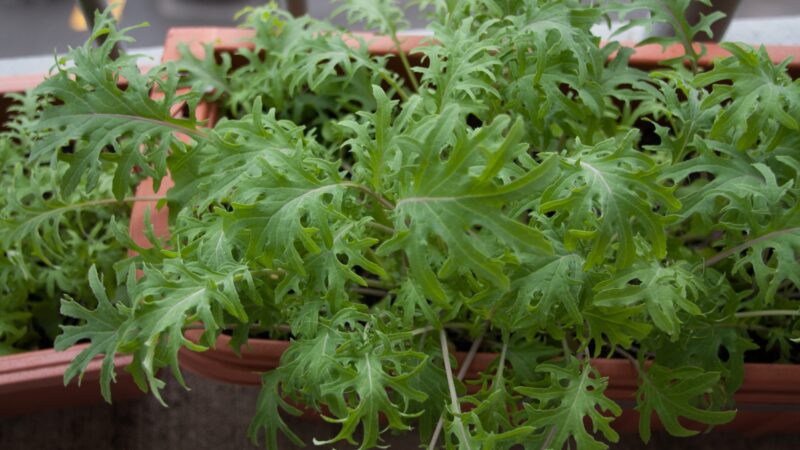
Baby Kale refers to the young, immature leaves of any kale plant variety. Since they are delicate, they also taste mild with a slightly peppery and earthy flavor. It is relatively new in the commercial market and can be used as greens in fresh salads, pasta, patties, rice pilafs, and other recipes.
- Scientific Name: Brassica oleracea var. acephala
- Appearance: Tender leaves that are generally bright green in color with a succulent texture and petite stems.
- Size: 2 to 4 inches
- Planting Guide: Can be planted through seeds or cuttings and taken care of just like any other kale variety, then harvested prematurely.
Chinese Kale
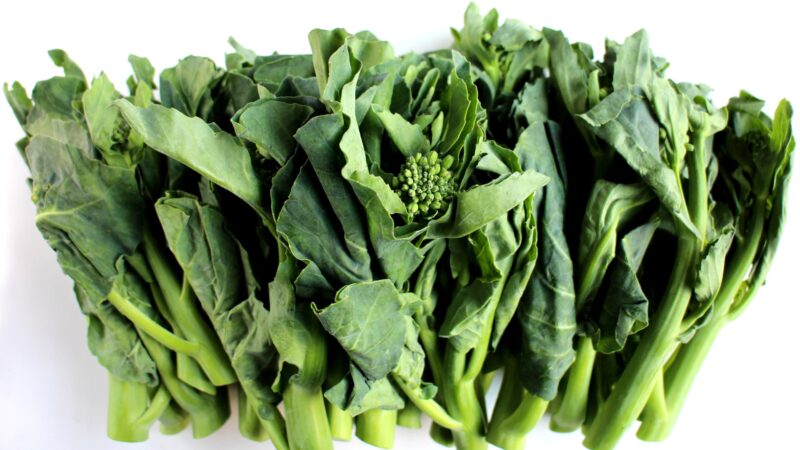
A relatively new variety in the US, Western Europe, and Japanese cuisines, the Chinese Kale is a fast-growing, heat and frost-tolerant plant whose young leaves are used in stir-fries and salads.
Ironically, it is more closely related to European cabbages instead of Chinese cabbages. Additionally, this plant is grown mainly for its flowering stem.
- Scientific Name: Brassica oleraceae var. alboglabra
- Appearance: Has slender leaves that are dark green in color with smooth, succulent flowering stems and florets that resemble those of broccolis.
- Size: 1 to 2 feet
- Planting Guide: Thrives best in fertile, well-drained soil with sufficient moisture. Planting should be done in the early spring. To avoid bolting, harvest the plant on time, especially when the weather is particularly hot.
Curly Kale
Not only is this variety a nutritious addition to salads, slaws, and stir-fries, but it can also be used as an attractive ornamental plant in flower gardens. Curly Kale is the most common and widely available variety in the market. This variety existed as early as the 4th century BC in Greece along with other flat-leaved plants.
- Scientific Name: Brassica oleracea var. acephala
- Appearance: Large, frilly-edged leaves that are pale to deep green in color and have long stems
- Size: 2 to 3 feet
- Planting Guide: Sow seeds 3 to 5 weeks before the last anticipated frost in your area. Soil should be fertile and well-drained, with a pH level of 6.5 to 6.8. Feed with 1 to 1.5 inches of water weekly.
Lacinato Kale
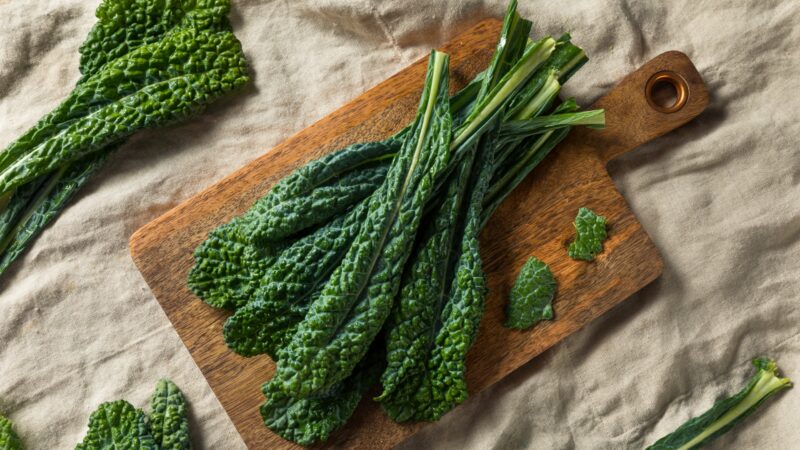
An Italian variety known for its gorgeous and striking appearance, the Lacinato Kale, also referred to as the Dinosaur Kale or Tuscan Kale, is popularly used in stews, soups, gratins, and salads, and it is even often recommended in the production of kale chips. It has a dramatic texture, color, and growth habit, which makes it a great addition to a container garden.
- Scientific Name: Brassica oleracea var. palmifolia
- Appearance: Dark blue-green, narrow, and long leaves that are puckered and strap-like in form. It has an upright growth.
- Size: 2 to 3 feet
- Planting Guide: Seeds should be sown in a high-quality potting mix in cell packs, pots, trays, and other appropriate containers at a quarter-inch depth. The soil should be kept consistently moist but not excessively wet. Use a kelp-based or fish emulsion fertilizer for the best results.
Ornamental Kale
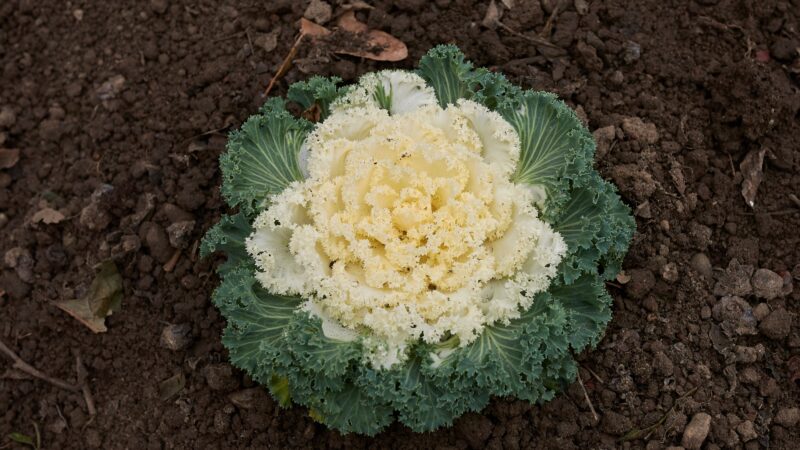
True to its name, this variety has particularly large, colorful, and showy foliage. The Ornamental Kale is not heat-tolerant and is planted usually in combination with other perennials such as little bluestem grass, asters, or sedums. It can also be planted in containers, as mass plantings, in front of borders, or as edgings.
- Scientific Name: Brassica oleracea var. acephala
- Appearance: Has red-bronze, green, yellow-green, or white foliage that is usually lobed or dissected in form. It grows pale yellow flowers after it bolts during the spring.
- Size: 8 to 18 inches
- Planting Guide: Sow seeds in the middle of the summer or buy transplants instead if you aim for a fall crop. The plant must be kept under cool temperatures to survive, which is why it is best planted in greenhouses. Vivid colors will start showing in temperatures below 50°F.
Portuguese Kale
Also referred to as the Sea Kale Cabbage and Couve Tronchuda, the Portuguese Kale comes with a mild flavor and tender texture great for smoothies, juices, soups, salads, stir-fries, and stews. It is easy to cultivate and provides a vigorous, year-long harvest. This variety is also cold and frost tolerant.
- Scientific Name: Brassica oleracea var. Tronchuda ‘Portuguese’
- Appearance: Has large, smooth, slightly notched, paddle-shaped leaves that are deep green in color with thick stems.
- Size: 2 to 2.5 feet
- Planting Guide: Should be grown in the same season as other forms of cabbage, particularly 2 to 3 weeks before the last expected frost date. It is prone to attacks by cabbage worms, so you must be wary of them.
Premier Kale
Perfect for container or in-garden planting, Premier Kale is a high-yielding cultivar that takes up to 60 days to mature. Also known as the Early Hanover, its nutritious green leaves can be incorporated into salads and stir-fries. It can resist bolting for 4 weeks longer than other varieties and can withstand light frost.
- Scientific Name: Brassica oleracea ‘Premier’
- Appearance: Smooth and tender leaves that are dark green in color and have scalloped edges. It has an overall upright and compact growth.
- Size: Up to 2.5 feet
- Planting Guide: For early harvests, sow its seeds indoors in a particularly sunny location for 6 to 8 weeks before transplanting outdoors. Overwinter indoors so that the plant remains compact while simultaneously developing new growing points on its main stem.
Prizm Kale
Prizm Kale is a recent All-American selection winner due to its attractive use as a container plant or grown in gardens. Technically, it is a compact version of the Winterbor cultivar characterized by a quick growth rate, which provides owners with a continuous, bountiful harvest throughout the year.
- Scientific Name: Brassica oleracea var. acephala ‘Prizm’
- Appearance: Small-statured plant with short, ruffle-edged, deep green leaves and virtually stemless stalks
- Size: Up to 15 inches
- Planting Guide: Although it can tolerate partial shade, this plant grows best in full sun and well-drained, moderately organically-rich soil. Seeds should be sown about a quarter to half an inch deep into the soil. You can start planting indoors. Then, transplant outdoors when the dangers of frost have passed. Water only when the soil is dry.
Red Russian Kale
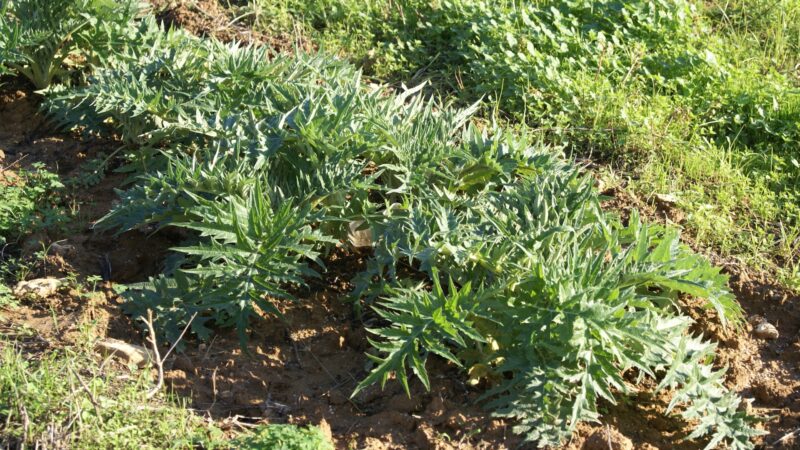
Along with Siberian Kale, Red Russian Kale is considered a different species and not a true kale but is nonetheless grown and treated as such. It is a tender variety used for salads, stir-fries, and other recipes involving some light cooking due to its great, raw but mild flavor, especially the mature leaves of the mature plant.
- Scientific Name: Brassica napus var. Pabularia ‘Red Russian’
- Appearance: Medium to tall overall growth, red, flat-toothed leaves with veins that are dark green and purple, as well as purple stems.
- Size: 1.5 to 3 feet
- Planting Guide: Prefers well-drained, organically-rich soil with a pH level of 6.0 to 7.5. 2 months after planting, it must be harvested through clipping. Since it is winter hardy, it can be planted in the late summer season for better taste.
Red Winter Kale
A rare variety used in salads but also performs well as a crop scheme since it can provide a continuous, all-year-round harvest for gardening enthusiasts. Its flower buds bloom early compared to other varieties. Whereas its tender leaves make delicious baby salad greens and microgreens.
- Scientific Name: Brassica napus var. Pabularia ‘Red Winter’
- Appearance: Has oak-shaped leaves that are dark green in overall color with dark reddish purple veins.
- Size: 22 to 36 inches
- Planting Guide: Seeds should be sown outdoors about 1 to 2 weeks before the last frost if you want them to grow in the late spring or early summer and mid to late summer if you want a fall crop. It can also be propagated by stem tips or root cuttings.
Redbor Kale
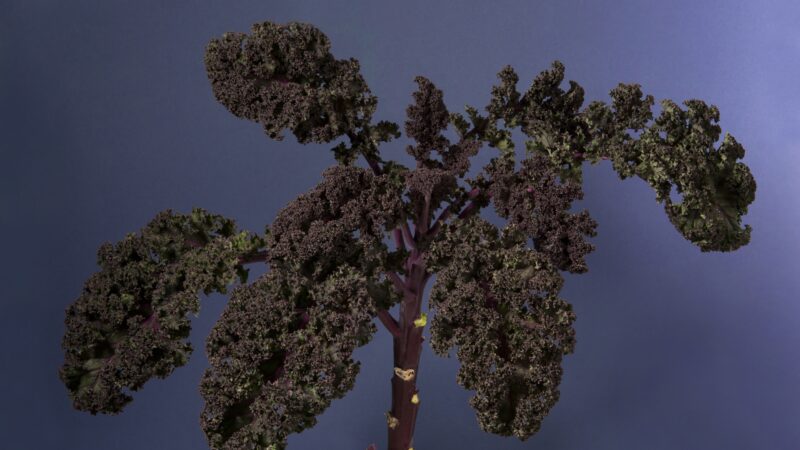
Redbor Kale has recently become more common in gardens as they are great winter containers due to their attractive foliage and long life expectancy. It is also packed with several vitamins, phytochemicals, and higher antioxidant levels than other types of kale. Aside from its ornamental value, it is also incorporated in salads and stir-fries.
- Scientific Name: Brassica oleracea var. Acephala ‘Redbor’
- Appearance: Has frilly leaves that are purple-red in color, which intensifies as temperatures become colder.
- Size: Up to 2 feet
- Planting Guide: Mostly grown in containers with constantly moist but well-drained loam soil under full sun. The best time to plant is during fall or early spring since they need cool temperatures for optimum growth. If grown under the right conditions, it can produce a good yield.
Scarlet Kale
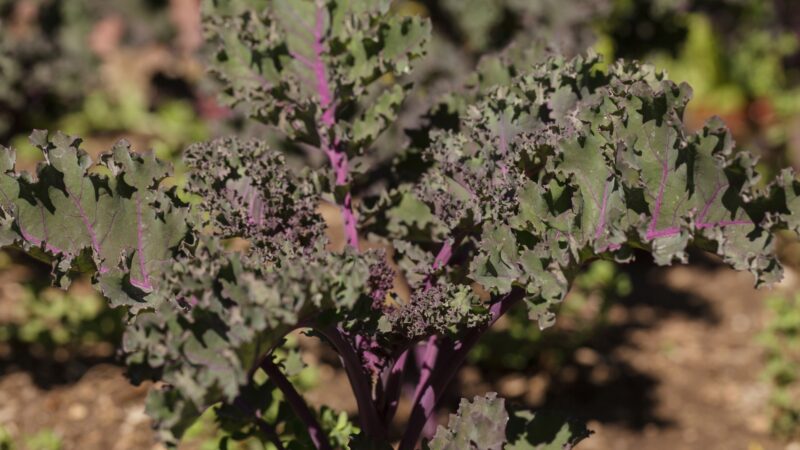
This type of kale is a highly recommended culinary variety mostly used in chef tasting that has excellent production yields and is hardy to cold temperatures. Scarlet Kale also has the highest amount of tocopherols, or Vitamin E, among kale cultivars, which means that it can act as a powerful antioxidant when eaten.
- Scientific Name: Brassica oleracea var. Acephala ‘Scarlet’
- Appearance: Has an overall upright growth with wide, frilly, and crinkly leaves that are dark green with red stems and veins.
- Size: Up to 3 feet
- Planting Guide: Can be grown using transplants or seeds in fertile, well-drained soil that is organically rich. Watering should be done infrequently but deeply into the soil to maintain moisture.
Scotch Kale
Scotch Kales have commercially available varieties such as the Dwarf Blue Scotch, Dwarf Green Curled Scotch, and Blue Curled Scotch, all of which are delicious and highly nutritious as they are used as main ingredients in stir-fries, broths, and salads. Once leaves are stripped off to be incorporated into cuisine, more leaves can continue sprouting from the plant.
- Scientific Name: Brassica oleracea var. Acephala ‘Scotch’
- Appearance: Has an overall compact growth and blue-green or grayish-green leaves that are curly or crinkled.
- Size: Up to 2 feet
- Planting Guide: Establishing is done through direct seeding optimally during spring or fall. After the plant has been established, it takes anywhere from 2.5 to 3 months for it to be ready for harvest.
Siberian Kale
Considered the most cold-hardy among kale types, Siberian Kale is not actually true kale but is deemed and grown as such anyway. It is a popular kale used in salads and stir-fries due to its tenderness and mild flavor. Its seeds can produce oil once extracted and can also be incorporated into salads or used for other cooking purposes.
- Scientific Name: Brassica napus var. Pabularia ‘Siberian’
- Appearance: Broad leaves that are lobed and have red leaf stalks and veins.
- Size: 12 to 16 inches
- Planting Guide: Seeds can be sown in containers before being placed in a garden. Grows best in organically rich, well-composted loam soil with good drainage and provided with constant moisture. It prefers full sun and must be mulched to protect it against cold temperatures.
Walking Stick Kale
Walking Stick Kale, also referred to as the Tree Kale or Jersey Kale, is adapted to humid, temperate climates but can also be found in a variety of tropical regions. Its immature leaves can be used as ingredients in salads, stir-fries, stews, and soups or as a garnish after being thoroughly cleaned in water.
- Scientific Name: Brassica oleracea var. longata
- Appearance: Has large, smooth leaves and tall, slender stems. It tends to curve downwards once it reaches a mature height.
- Size: 5 to 10 feet
- Planting Guide: This type of kale is propagated only by stem tip cuttings which should be planted vertically directly in the ground or nursery containers under full sun or partial shade for tender, larger leaves. Transplanting can be done within 4 to 6 weeks, preferably at the beginning of the rainy season.